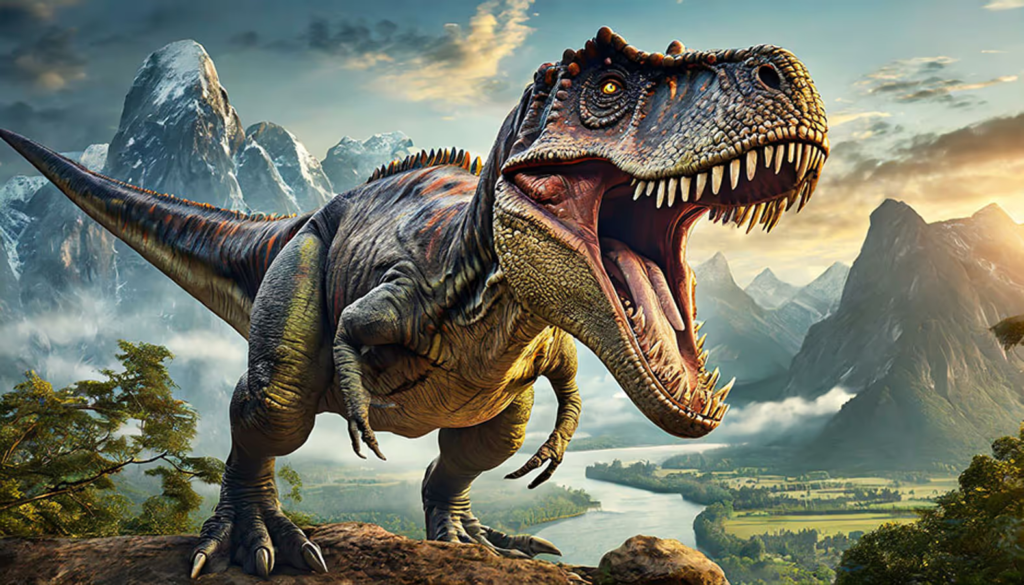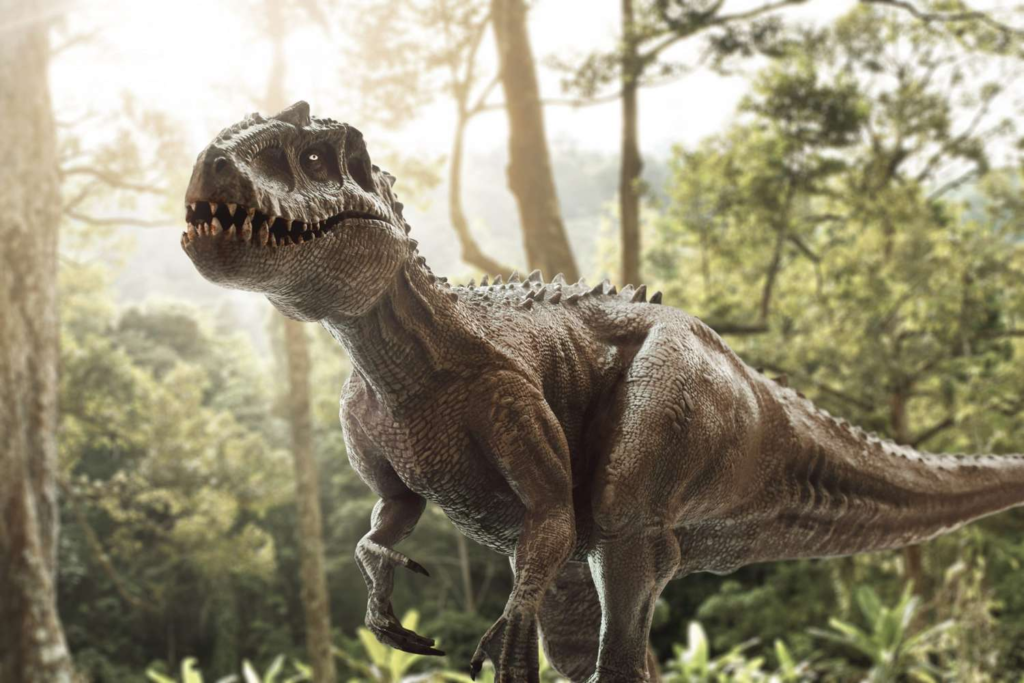The extinction of dinosaurs is one of the most debated and studied events in Earth’s history. For decades, scientists widely accepted the theory that a single asteroid impact led to the mass extinction 66 million years ago, wiping out 75% of the Earth’s species, including the dinosaurs.
This catastrophic event was believed to be caused by an asteroid that struck the Yucatán Peninsula, creating the famous Chicxulub crater. However, recent discoveries have introduced a new twist to this theory—evidence now suggests that not one, but two asteroid impacts may have contributed to this mass extinction.
Read : Theropod: Huge Carnivore Dinosaurs Once Walked Earth’s Polar Regions in Australia
The second impact, associated with the Nadir Crater off the coast of West Africa, reveals a more complex scenario. While the Chicxulub event remains central, this second asteroid likely amplified the destruction, leading to an even more devastating outcome for life on Earth.
Discovery of the Nadir Crater: A Second Impact
The Nadir Crater, located off the coast of Guinea in West Africa, was first identified in 2022 by Dr. Uisdean Nicholson, a marine geologist from Heriot-Watt University in Scotland. While conducting seismic scans of the ocean floor, Dr. Nicholson and his team uncovered this previously unknown crater.
Read : 60 Million-Year-Old Seeds Show Death of Dinosaurs Helped Grapes Spread Worldwide
The crater, measuring over five miles in diameter, was formed by an asteroid roughly a quarter of a mile in size. Although this asteroid was significantly smaller than the one that created the Chicxulub crater, its impact likely had catastrophic effects on the environment, further contributing to the mass extinction event.
What makes this discovery particularly intriguing is that the Nadir Crater is thought to have formed around the same time as the Chicxulub impact, suggesting that the Earth may have experienced multiple asteroid collisions during this period.

The exact timing of the Nadir impact is still under investigation, but its close proximity to the Chicxulub event raises the possibility that the two impacts were part of a larger chain of cosmic collisions that reshaped the Earth’s surface and atmosphere.
The discovery of the Nadir Crater was made possible through advanced 3D seismic imaging technology. By mapping the crater in unprecedented detail, scientists have been able to visualize the structure of the impact site and gain insights into the processes that occurred during the asteroid’s collision with the Earth.
According to Dr. Nicholson, the images of the Nadir Crater reveal a clear picture of the catastrophic event, showing evidence of violent earthquakes, landslides, and the formation of new geological faults beneath the ocean floor.
The Impact of Nadir: A Global Catastrophe
The asteroid that struck the Nadir Crater was smaller than the one responsible for the Chicxulub impact, but its effects were still devastating. Traveling at speeds exceeding 45,000 mph, the asteroid generated an immense amount of energy upon impact.
This energy triggered massive earthquakes, which in turn caused landslides and the shifting of tectonic plates beneath the ocean. The force of the impact also generated a colossal tsunami, estimated to have been over 800 meters tall, which likely spread across the Atlantic Ocean, wreaking havoc on the surrounding regions.
While the exact role of the Nadir impact in the mass extinction event is still being studied, scientists believe that it may have compounded the effects of the Chicxulub impact.
The combined force of two asteroid strikes would have significantly amplified the environmental devastation, leading to more extreme climate changes and faster rates of species extinction.

The Nadir impact would have added additional stress to ecosystems already reeling from the aftermath of the Chicxulub event, accelerating the decline of species and pushing the planet toward a mass extinction.
The Nadir Crater also provides new insights into the geological processes that occurred during this period. The seismic imaging of the crater has revealed the extent of the damage caused by the impact, showing evidence of widespread fault lines and cracks in the ocean floor.
These geological features suggest that the asteroid’s impact had far-reaching consequences for the Earth’s structure, reshaping the landscape in ways that may have contributed to long-term changes in the planet’s environment.
Planetary Defense: The Importance of Preparedness
The discovery of the Nadir Crater highlights the importance of understanding asteroid impacts and their potential threats to life on Earth. While the Chicxulub and Nadir impacts occurred millions of years ago, the threat of asteroid collisions remains a real concern today. In response to this, space agencies around the world are working on developing planetary defense strategies to protect Earth from future asteroid impacts.
One of the most notable efforts in this field is the European Space Agency’s (ESA) Hera mission, which is set to launch in the coming years. Hera will build on the success of NASA’s Double Asteroid Redirection Test (DART) mission, which was designed to test the feasibility of redirecting an asteroid’s trajectory.
DART successfully collided with the Didymos-Dimorphos asteroid system in 2022, demonstrating that it is possible to alter the course of a potentially dangerous asteroid.

Hera will take this research a step further by providing detailed observations of the Didymos-Dimorphos system. Scheduled to launch aboard a SpaceX Falcon 9 rocket, Hera is equipped with a range of scientific instruments, including two Asteroid Framing Cameras, a Thermal InfraRed Imager, and two CubeSats (Juventas and Milani).
These tools will allow scientists to map the asteroids’ surfaces, measure their mass, and detect any changes caused by the DART impact. By studying the effects of the DART mission in detail, Hera will help researchers refine their techniques for redirecting asteroids and better prepare for any future threats.
Planetary defense is a critical field of research, as asteroid impacts pose a significant risk to life on Earth. The Nadir and Chicxulub impacts serve as a reminder of the destructive potential of these cosmic events.
While the probability of a large asteroid impact in the near future is low, it is essential to remain prepared and continue developing strategies to mitigate the threat. The Hera mission represents a significant step forward in this effort, providing valuable data that will help scientists better understand how to prevent future asteroid collisions.
The discovery of the Nadir Crater adds a new layer of complexity to our understanding of the events that led to the extinction of the dinosaurs. While the Chicxulub impact remains the primary cause of this mass extinction, the Nadir impact suggests that the Earth may have experienced multiple asteroid collisions during this period, compounding the devastation.

The combined effects of these impacts likely played a significant role in the extinction of 75% of the Earth’s species, including the dinosaurs. As scientists continue to study the Nadir Crater and its relationship to the Chicxulub event, new insights are emerging about the processes that shaped the Earth during this critical period in its history.
The Nadir impact provides a more nuanced understanding of the catastrophic events that occurred 66 million years ago, highlighting the importance of considering multiple factors when studying mass extinctions.
At the same time, the ongoing research into asteroid impacts underscores the importance of planetary defense efforts. Missions like Hera are essential for developing the tools and techniques needed to protect Earth from future asteroid threats.
By studying past impacts and preparing for potential future collisions, scientists are working to ensure the survival of life on Earth in the face of these cosmic challenges.
As we continue to explore the mysteries of our planet’s history and the universe beyond, the discovery of the Nadir Crater serves as a reminder of the dynamic and ever-changing nature of our world.
let’s enjoy few years on earth with peace and happiness….✍🏼🙏

